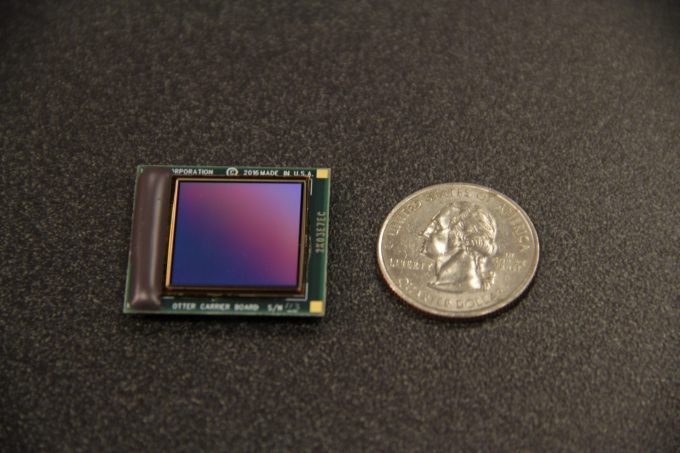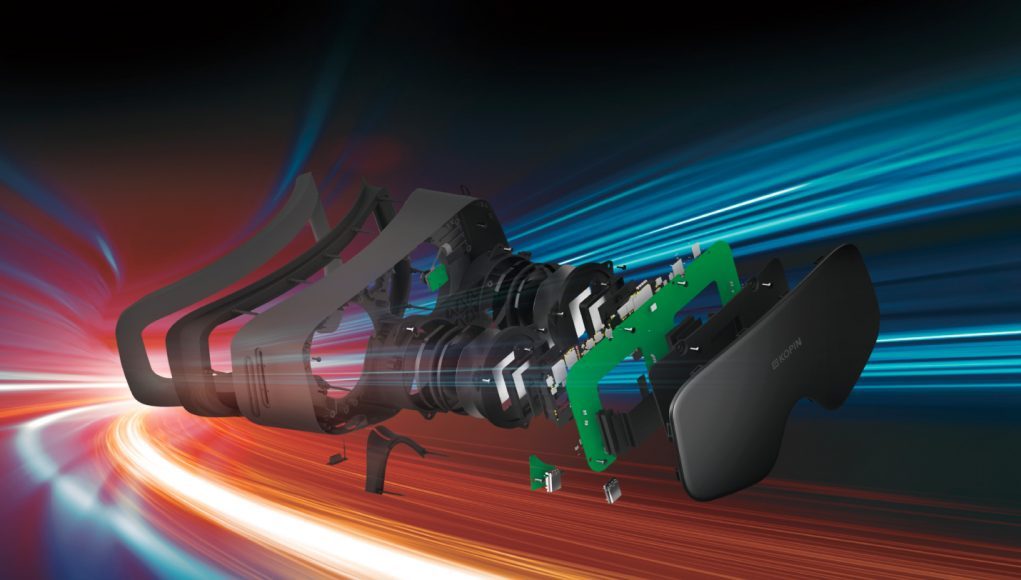Display specialists Kopin in partnership with Chinese company GoerTek have announced a new reference VR headset design that it claims is the smallest of its kind integrating the firm’s ‘Lightning’ OLED micro display panels sporting a substantial 2k x 2k resolution.
One of the key ‘most wanted’ advances desired in today’s retail virtual reality headsets is higher resolution displays. Recently we reported on Samsung’s prototype OLED panels sporting a PPI (pixels per inch) figure of 858, nearly twice that of the current generation HTC Vive and Oculus Rift headsets. Now, micro display specialist Kopin have unveiled a new reference design headset with displays that top even that.
The adorably named ‘Elf VR’ headset is equipped with two of Kopin’s “Lightning” OLED micro display panels, which each feature a 2048 x 2048 resolution, providing “binocular 4K image resolution at a 120Hz refresh rate” – a figure which is misleading as the horizontal resolution is ‘per eye’ and there cannot resolve the 3840 horizontal pixels required for an equivalent ‘UHD’ image (even ignoring the shortfall in vertical resolution). In case you’re wondering, each diminutive display represents an impressive 2940 pixels per inch – that’s five times the number on existing Samsung panels in the Vive and Rift.

“It is now time for us to move beyond our conventional expectation of what virtual reality can be and strive for more,” explained Kopin founder and CEO John Fan as part of a recent press release. “Great progress has been made this year, although challenges remain. This reference design, created with our partner Goertek, is a significant achievement. It is much lighter and fully 40% smaller than standard solutions, so that it can be worn for long periods without discomfort. At the same time, our OLED microdisplay panel achieves such high resolution and frame rate that it deliver a VR experience that truly approaches reality for markets including gaming, pro applications or film.”
Of course, the other major statistic of interest for VR headsets is the expansiveness of the field of view (FOV) or, how much of your peripheral vision is encompassed by the image. With smaller displays come optical challenges in achieving immersive FOVs. Kopin claim are tackling this with a two-pronged approach. Their reference design includes two “Multi-lens” optical design branches. The first is a unit targeting the aforementioned media / movie watching category which offers a 70 degree FOV (it’s not stated if this is horizontal, vertical or diagonal) – which will present a sharper image with higher pixel density. The second offers a much greater 100 degree FOV, presumably at the sacrifice of optical sharpness.
Of course with smaller integrated panel hardware and these optical systems, the other benefit to Kopin’s approach could be weight advantages. Kopin claim it’s managed to reduce its optical module by 60% to leverage a 50% weight reduction – although as no numbers were provided we’re not sure what this comparison refers to.
As we’ve seen time and again since the start of the most recent VR renaissance, it continues to provide an impressive catalyst to accelerating technological innovation in multiple fields. And with both Samsung and Kopin already at a stage where they can produce next generation VR displays, it hopefully won’t be too long before we begin to see tangible upgrades over existing ‘first gen’ hardware. That ‘soon’ may mean mid 2018, at least according to Oculus founder Palmer Luckey, speaking in an interview recently.







